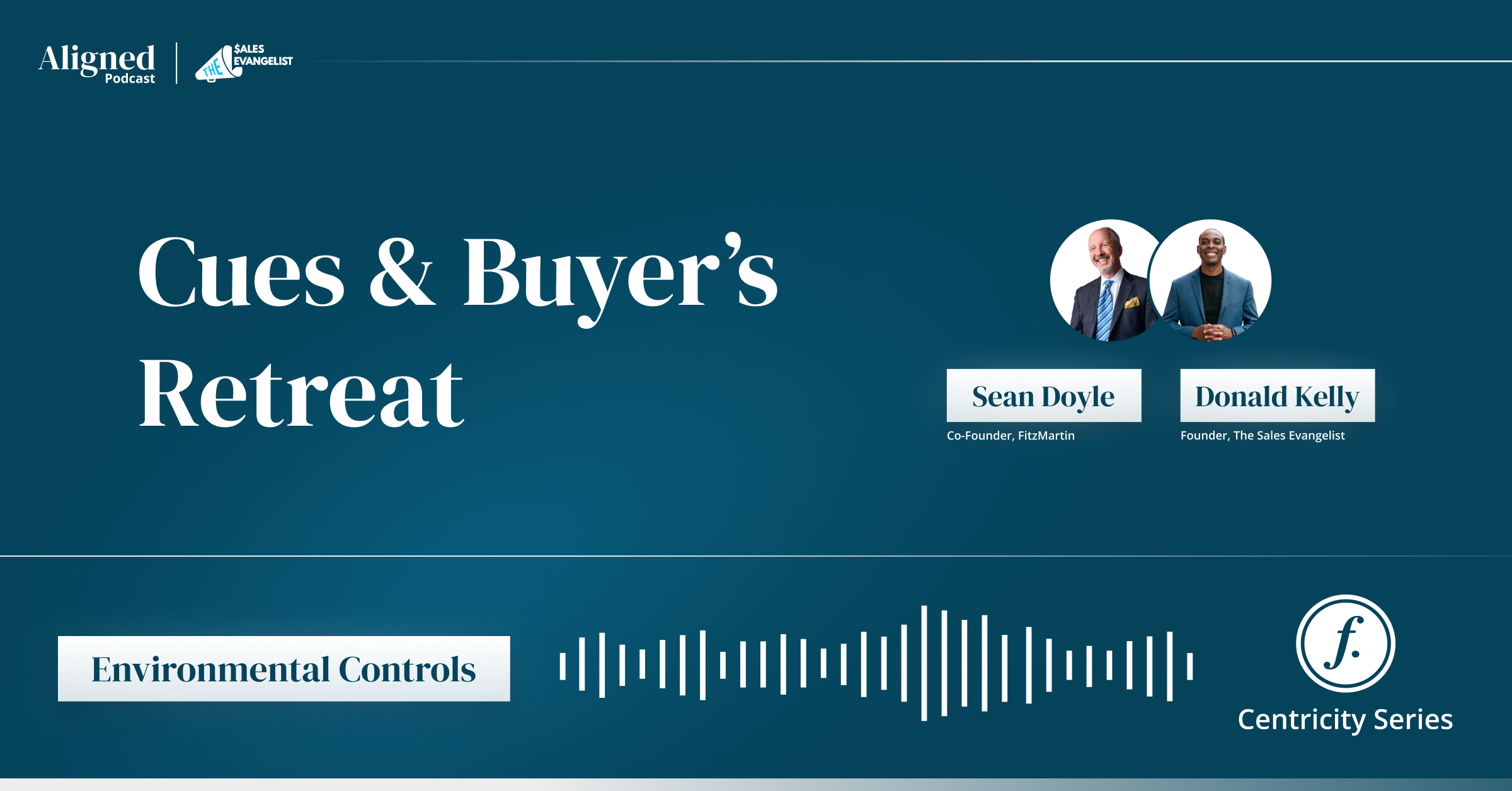
Implementing environment management during the sales journey brings a variety of benefits to the seller during the process (we’ve talked much about this already here, in our previous post). Not only are effective environmental controls a great way of exposing buyers to a different way of thinking (i.e., illustrating how your company’s service or product best solves their particular pain or problem), but also they do so while moving the buyers further down the sales pipeline. To truly garner the most potential from an environment management strategy, however, it’s critical that the seller understands the specific strategy that’s needed and when it should be implemented. That comes with understanding what stage of the sales cycle the buyer is currently in. Cues and the reduction of buyer’s retreat are two strategies that can be utilized in the buyer’s journey to help sway customer behavior to accept the deal that best solves their problems.
The Importance of Cues
The idea of a cue is fairly straightforward: linking an existing action or behavior to an existing cue. Cues are used far beyond the scope of the selling process—think plays, films, and even standard conversations we have with friends and family. Cues can be both verbal and nonverbal, and both types of cues have a place in the selling process because they can help a seller limit bad behavior within a customer. Cues can drive a buyer to either accept a positive action or reduce an existing bad behavior not conducive to your sale (i.e., purchasing a solution from another company).
Cues are actually easily implemented. Understanding where in the sales cycle to utilize them, however, is what makes a significant difference in their success. Like gift giving, cues are a great late-stage strategy. While a small knowledge of the client is necessary to understand the existing bad behavior, limiting their bad behavior is necessary to move into a later stage of the sales cycle. Yet as a seller will frequently learn, there are likely multiple “bad behaviors” the buyer might have that might lead to a retreat or rejection of the sale.
What is Buyer’s Retreat?
When buyers retain limiting thoughts, beliefs and actions, they might leave the sales cycle or distance themselves from continuing forward in the sales process. This is known as buyer’s retreat, and it’s a natural (yet unfortunate) part of the selling process. Buyer’s retreat is not only harmful to the individual sale, but it also wastes the seller’s valuable time—time that could be spent reinforcing positive messaging to other prospects. With this in mind, how can a seller prevent buyer’s retreat from occurring within a buyer?
Reducing Buyer’s Retreat to Retain Sales
Preventing buyer’s retreat comes down to the seller themselves. The buyer already has an identified problem that your solution solves (if that isn’t the case, they likely shouldn’t be a prospect in the first place). Reducing buyer’s retreat requires sincere action by the seller to create a connection with the prospect—one that illustrates the organization’s value to their lives. Demonstrate the advantage of your product or service to the prospect to solve their need. Doing so creates a scenario that helps the prospect envision their desired end state and how it’s only accomplished with your product or service. That can be done in a variety of ways—through gifts, events and targeted communications. If the seller efficiently communicates positive results for the customer that are uniquely tied to their product or service, the prospect will be much less likely to retreat and more likely to see the sale through to the end.